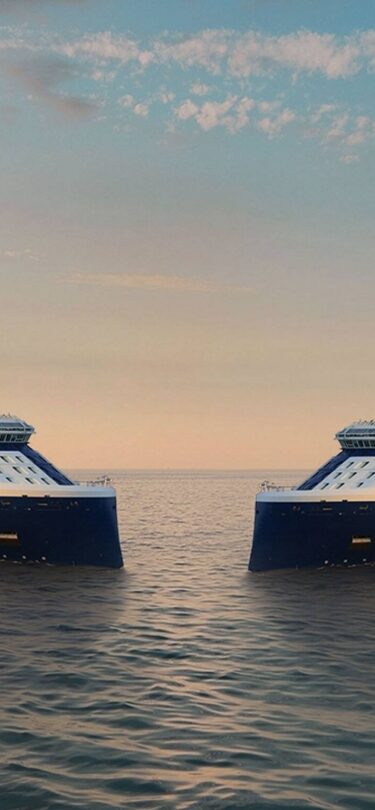The best places to visit in Montenegro include leafy vineyards, incense-scented churches, and golden beaches. Equally, sun-dappled squares in lively old towns and alluring lakes are part of Montenegro’s allure.
Lying on the sparkling Adriatic Sea in southeast Europe, Montenegro offers a delightful blend of natural beauty and rich history, combined with an unhurried pace of life. All this makes for a wonderful place to go on vacation.
From rugged mountain vistas near Kotor to medieval fortresses dotted along the serene coastline, here are 15 of the best places to visit in Montenegro.
Our Lady of the Rocks, near Kotor
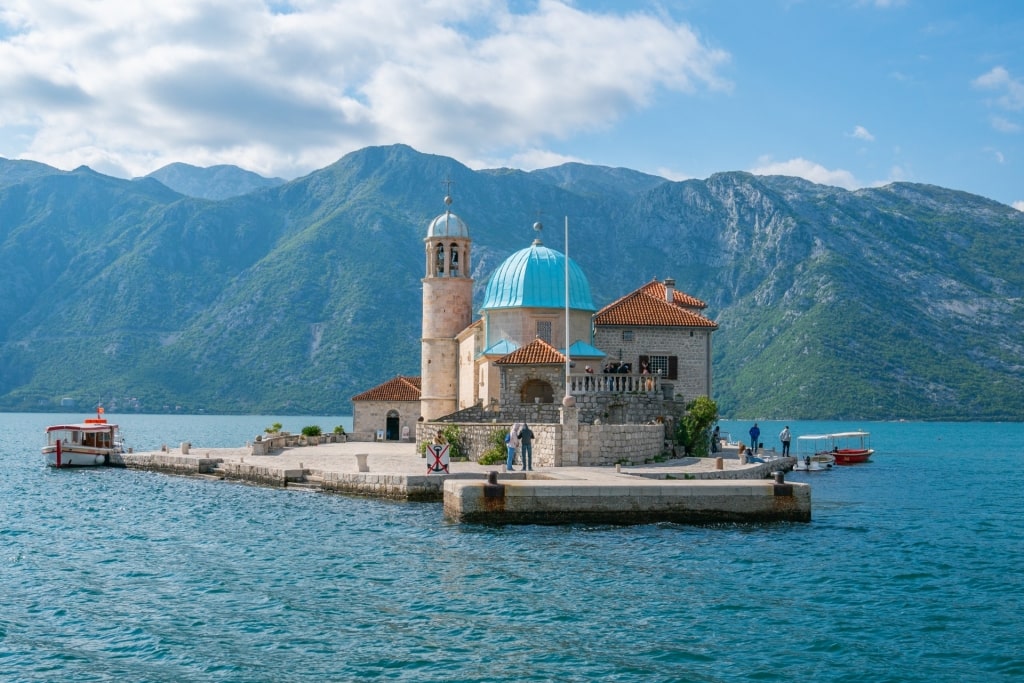
Our Lady of the Rocks, near Kotor
One of the best places to visit in Montenegro is Our Lady of the Rocks, a famous church perched on an island in the Bay of Kotor next to Sveti Đorđe Island, both facing Perast.
Our Lady of the Rocks church dates from 1632, featuring a copper-domed roof and a single bell tower. From the mainland, Our Lady of the Rocks appears to float like a pontoon on the surface of the water.
Legend has it that local sailors built the islet from rocks after finding an image of Madonna and Child on a rock here in 1452. This led to a tradition forming that saw sailors lay another rock upon returning from a successful voyage.
This ancient tradition is celebrated every year on July 22, when residents throw rocks into the bay around the islet at sunset.
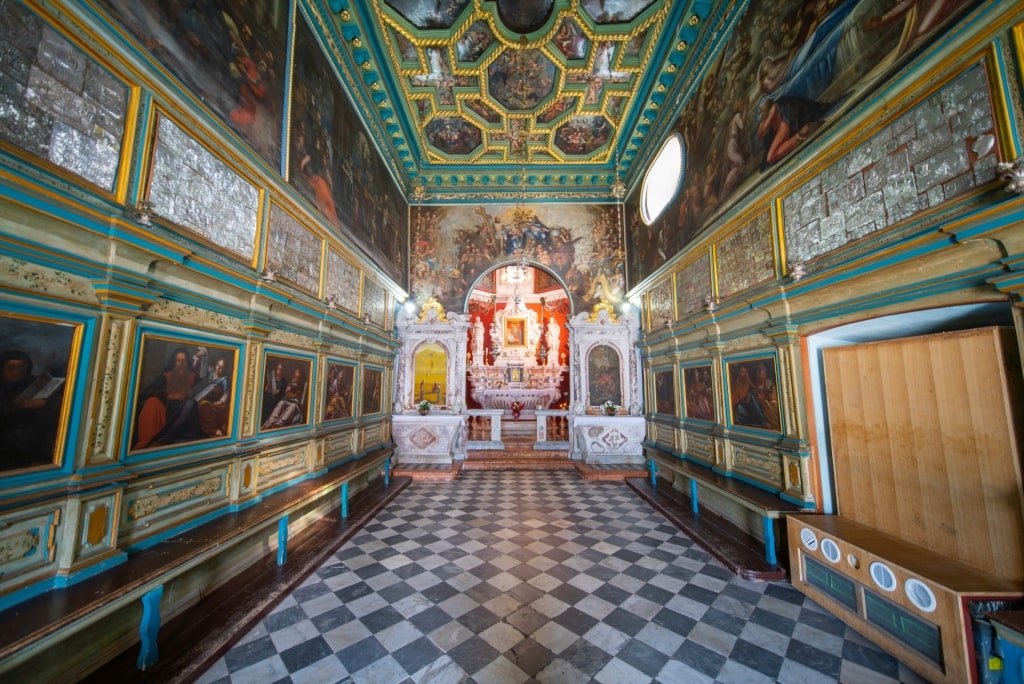
Our Lady of the Rocks, near Kotor
Take a taxi boat to visit Our Lady of the Rocks from Perast or Kotor. You’ll find dozens of paintings by prominent 17th-century Baroque artist Tripo Kokolja on display, and gorgeous frescoes inside the church.
Winery Dabovic, near Kotor
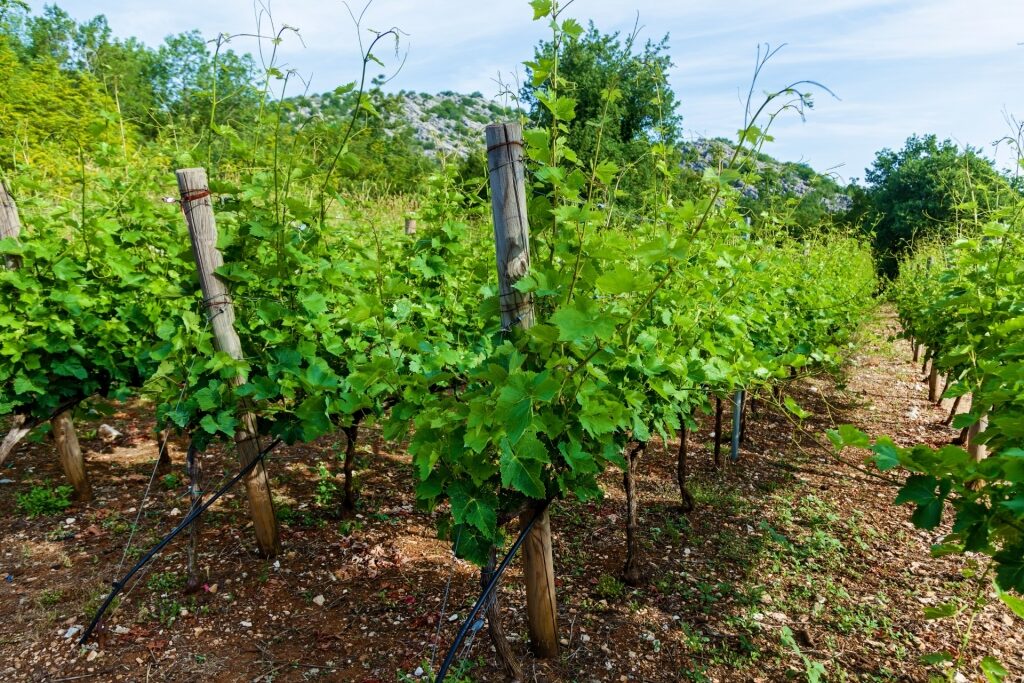
Winery Dabovic, near Kotor
If you’re keen to sample local libations on vacation, head to Winery Dabovic in the village of Nudo, close to Montenegro’s border with Bosnia and Herzegovina.
Easy to reach from the Eastern European city of Kotor, Winery Dabovic benefits from 2,200 hours of sunlight annually, with the organic, sun-ripened grapes flourishing some 1,000 feet above the sea.
The winery, formerly the Imperial Winery, is over 100 years old, featuring grape varieties from the Austria-Hungary period, with the wines once served in Vienna’s royal court.
Wander among the rows of vines before sampling Dabovic’s delicious white and red varieties, with a selection of bread, cured meats, and cheeses on the shaded terrace.
Perast
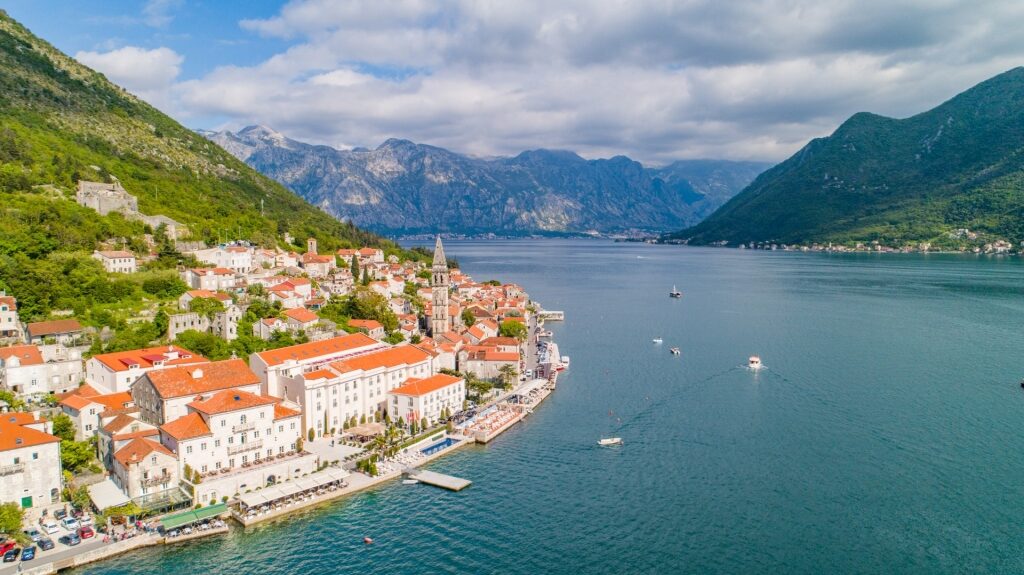
Perast
At the entrance to the Bay of Kotor, Perast is a romantic spot with a rich seafaring history. English poet Lord Byron probably had Perast in mind when he wrote, “At the birth of the planet, the most beautiful encounter between land and sea must have been on the Montenegrin coast.”
Bars and restaurants are dotted along the picturesque waterfront, while oatmeal-colored buildings draped in bougainvillea line the streets. This small town is also home to a dozen or so churches, including the Church of St. Nicholas, with its lofty bell tower.
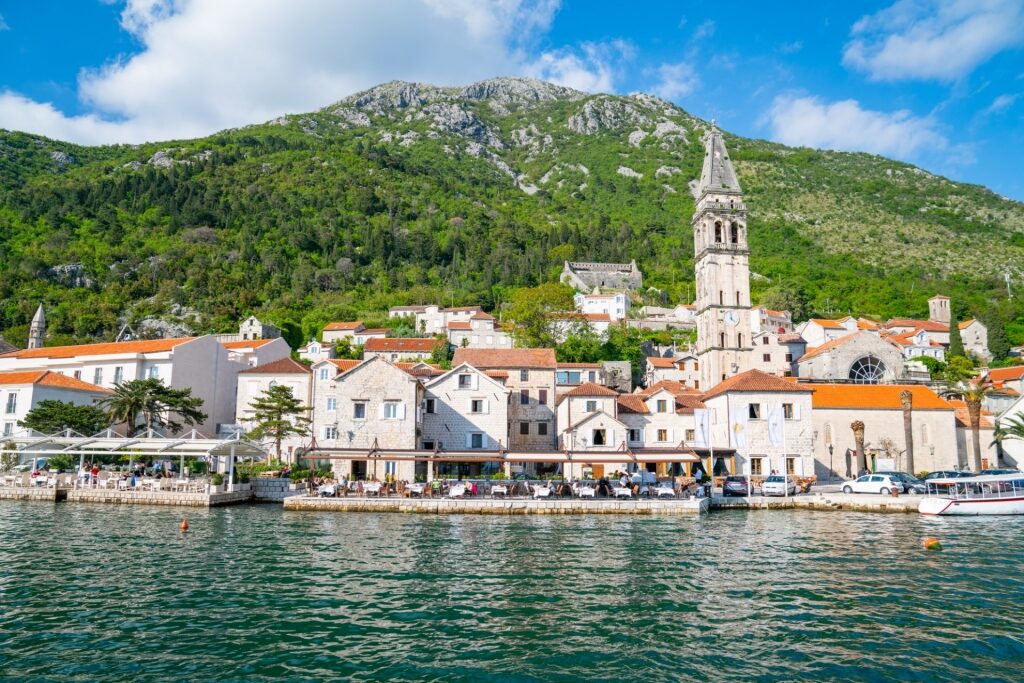
Perast
Drop by the enchanting Maritime Museum to see paintings of tall ships rocking on high seas, antique sailors’ uniforms, and sepia-hued maritime maps.
After, pick up an ice cream from the parlor next door before wandering Perast’s promenade, stopping to gaze at Our Lady of the Rocks, just offshore.
King Nikola’s Palace, Bar
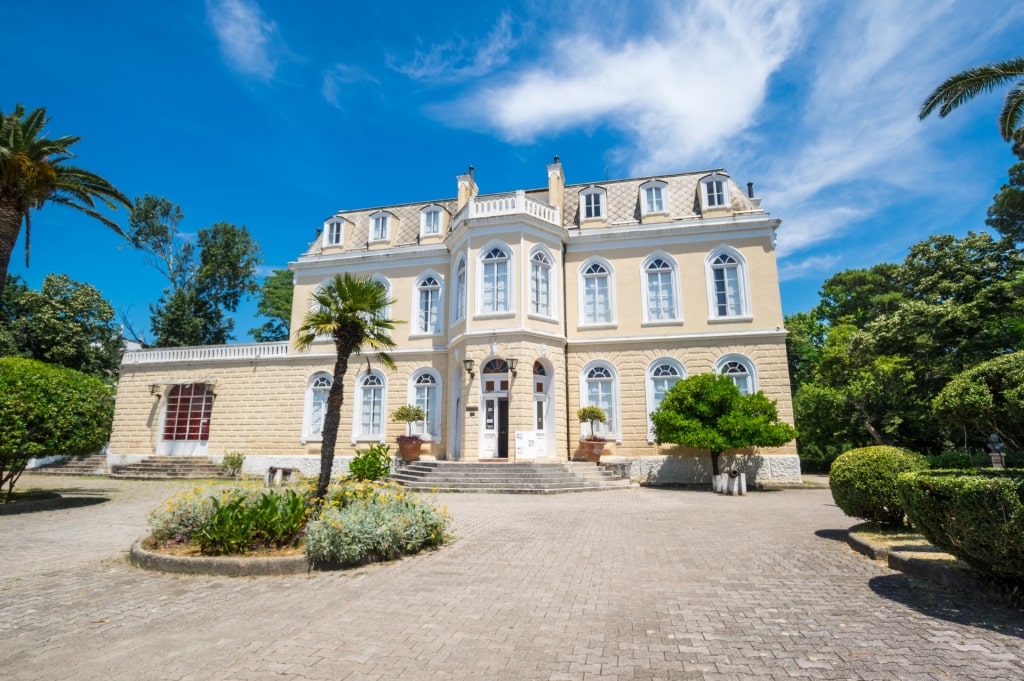
King Nikola’s Palace, Bar
The elegant King Nikola’s Palace on Bar’s waterfront is a former royal summer residence and is now a museum displaying antiques, art, furniture, and folk costumes.
The pastel-colored palace was built in 1885 by King Nikola I Petrović-Njegoš as a gift to his daughter, Princess Zorka, and son-in-law, Prince Petar Karađorđević. The palace is particularly significant because of King Nikola’s position as the only king of Montenegro.
Explore the exhibitions inside the palace’s lavish rooms. A ballroom, added in the early 20th century, hosts musical, art, literary, and theater events. Outside, the Winter Garden is blissfully tranquil, with palm trees, pines, a cork tree, and other Mediterranean greenery.
After a visit to King Nikola’s Palace, stroll along the seashore, with a public beach and the yacht-filled Bar Marina opposite, and a clutch of restaurants and bars close by.
Lake Skadar, near Bar
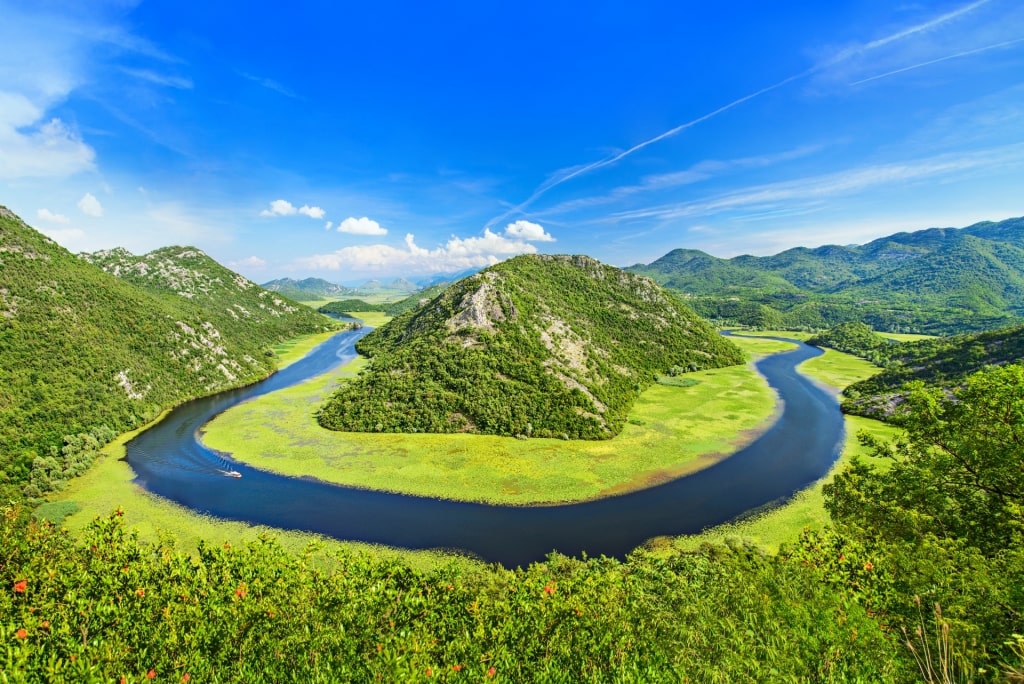
Lake Skadar, near Bar
One of the most beautiful lakes in the world, Lake Skadar straddles the Montenegrin-Albanian border, though most of it lies in Montenegro, in a staggeringly beautiful national park.
Skadar is the largest lake in the Balkans and is home to water meadows and swamps, surrounded by green mountains. Lake Skadar also has spectacular wildlife, including 270 bird species such as migratory white little egrets and white spoonbills, plus three types of snake, carp, and an endemic fish called ukljeva.
Lake Skadar’s banks are dotted with pocket-size villages, vineyards, and ancient churches. Quaint Virpazar, on the northwest shore of the lake, is the kind of place you see on nostalgic postcards. Small timber boats are tied to the water’s edge and a handful of attractive restaurants line the shore.
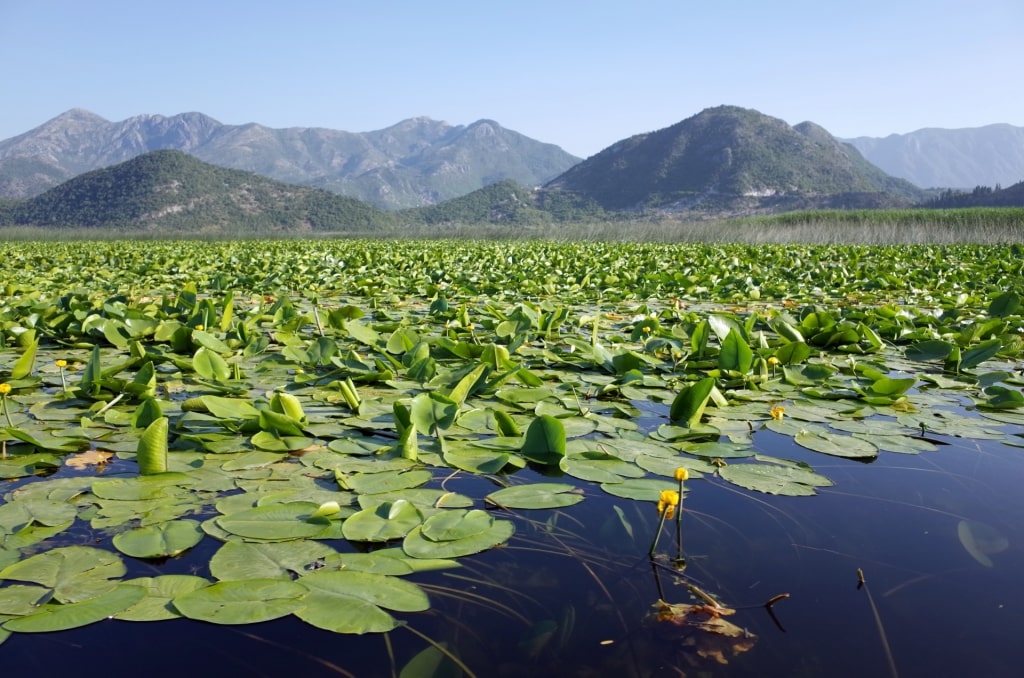
Lake Skadar, near Bar
One of the best things to do in Montenegro is rent a kayak from Virpazar to explore the lake. Boat tours leave from Virpazar, too, taking travelers to visit Beška Island, home to a 14th-century monastery.
Zanjice Beach, near Kotor
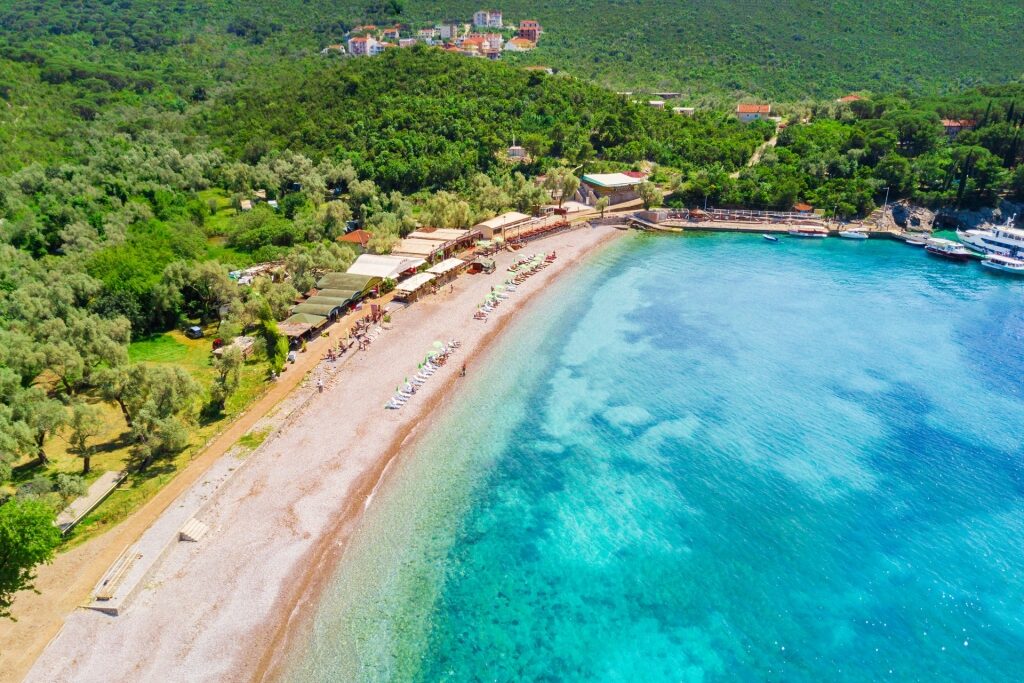
Zanjice Beach, near Kotor
If you’re in the mood for a lazy beach day, Zanjice, near Kotor, is one of the best places to visit in Montenegro.
Not only is the water deliciously warm and an alluring shade of turquoise during summer but there are excellent facilities, including watersports and sun loungers. Relax under the shade of a parasol and take a sea-air-induced nap before ordering a bite to eat at one of the beach bars.
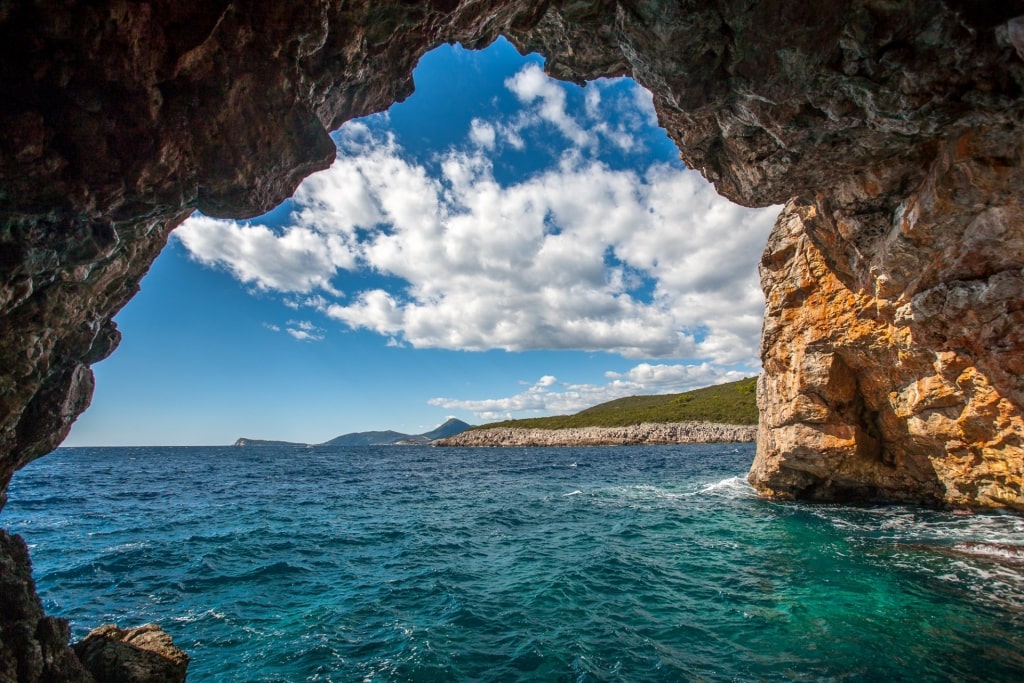
Blue Cave, near Kotor
Another great reason to visit Zanjice Beach is its proximity to the Blue Cave, one of Montenegro’s most famous natural attractions. Zip along the Adriatic coast via a breezy taxi boat to see the Blue Cave, with the water taxis small enough to sail right inside the sapphire grotto.
The Blue Cave is quite the spectacle. In the summertime, shards of sunlight puncture the water, refracting on the cave walls. Pack a towel and wear swimwear to jump right off the boat, straight into the luminous water.
Church of St. Jovan Vladimir, Bar
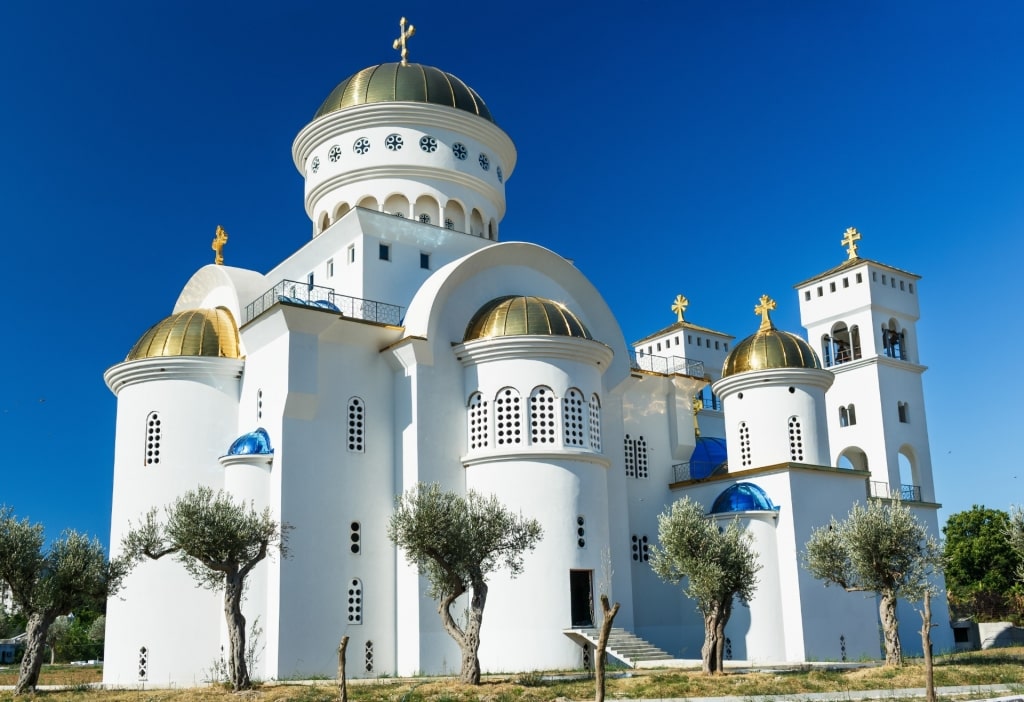
Church of St. Jovan Vladimir, Bar
The Church of St. Jovan Vladimir, near Bar’s waterfront, is an astonishing gold-domed cathedral built between 2006 and 2016.
Dedicated to the red-robed patron saint of Bar, Jovan Vladimir—ruler of Duklja, a powerful Serbian principality in the early 10th century—the church consecrated on the 1,000th anniversary of his death.
Known as a peaceful ruler, Vladimir is considered the first saint of Serbia and is honored in frescoes painted inside this Serbian Orthodox Church. The church’s domes are adorned with large white crosses, including a 15-foot gilded cross atop the largest and central dome.
Lovćen Mountain, near Kotor

Lovćen Mountain, near Kotor
The densely forested Lovćen Mountain, within the rocky Lovcen National Park and Dinara Alps, is a short distance from Kotor in southwest Montenegro.
The imposing mountain is home to the Mausoleum of Petar II Petrovic-Njegos, a poet prince considered the country’s greatest ruler. Officially, the prince-bishop of Montenegro, Njegoš, as he was simply known, was born nearby in the mountain village of Njeguši in 1813.

Lovćen Mountain, near Kotor
Reach Lovćen Mountain’s 5,495-foot peak via the dizzying serpentine road from Kotor. It’s an arresting journey with plenty of viewing points you’ll want to capture on camera.
Visit the former ruler’s resting place inside the marble chapel. Though you won’t need to scale the mountain on foot since most of it is driveable, you will need to tackle 461 steps to arrive at the mausoleum. It’s worth the effort to witness the breathtaking views and the 200,000 gilded gold tiles that form the mausoleum’s ceiling.
Ulcinj
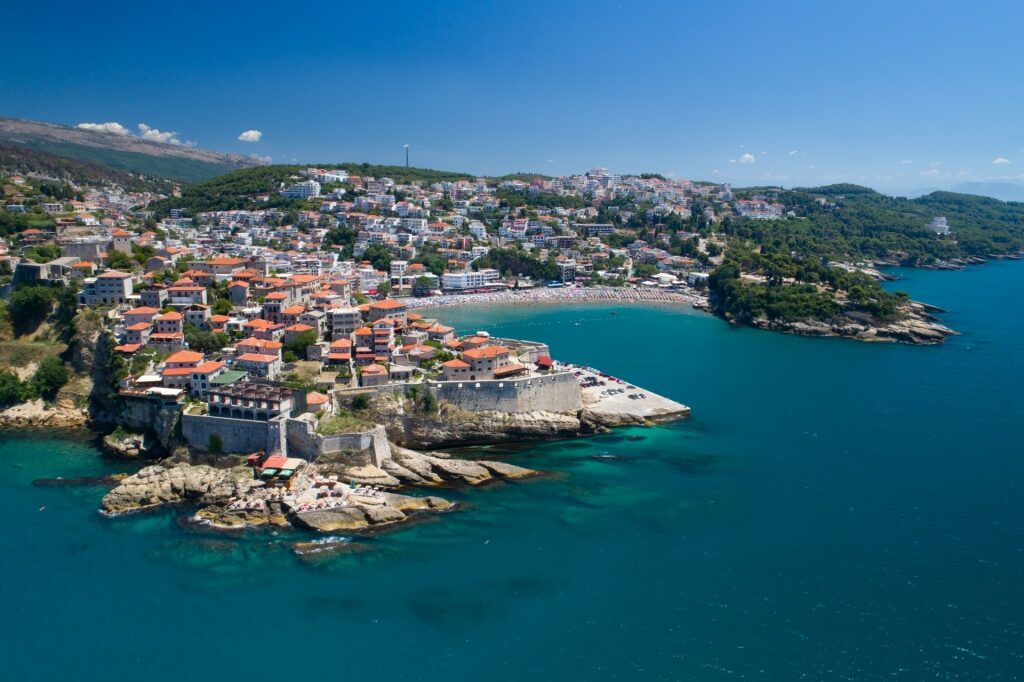
Ulcinj
This former pirate’s den of a town is the most southerly in Montenegro, close to the Albanian border. Ulcinj is a hodgepodge of Eastern European cultures, unsurprisingly, heavily influenced by its neighbor to the south.
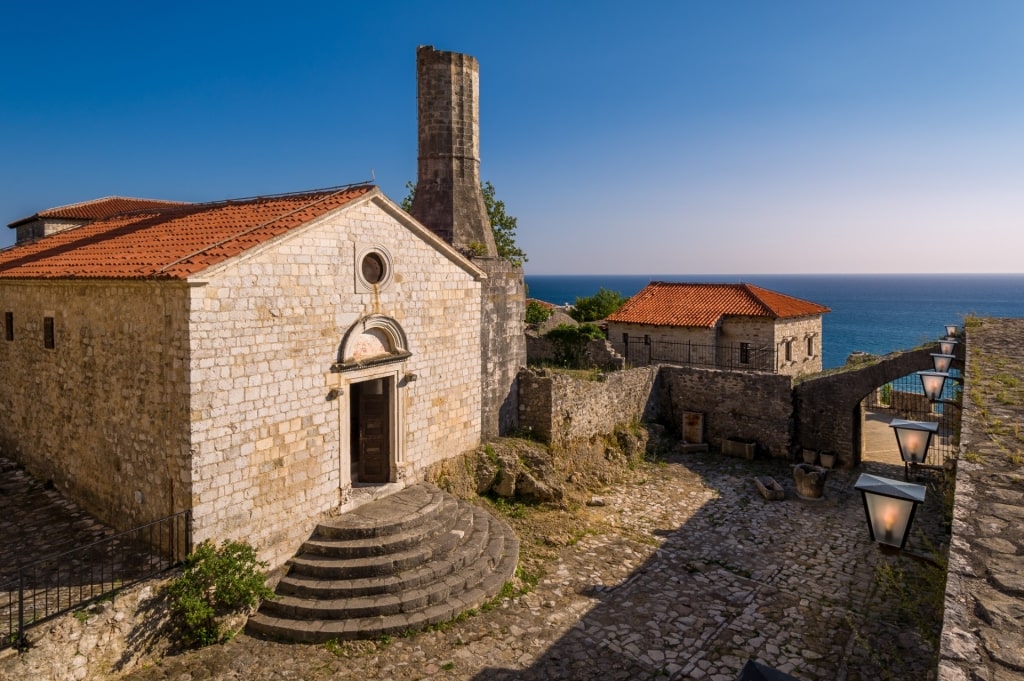
Museum of Ulcinj
Mosques and their minarets are scattered around town, including Sailor’s Mosque, a former lighthouse in front of Small Beach, where you can enjoy plenty of people watching. Stop by the Museum of Ulcinj in the Old Town to explore the region’s thousands of years of history, and visit the ancient Ulcinj Castle and its fortified walls on the tip of the Old Town’s peninsula.
Once you’ve strolled around the Old Town, shopping and stopping at the various churches, break for a satisfying lunch at one of the old quarter’s many restaurants, such as Dulcinea, for fresh seafood and Adriatic views.
Herceg Novi
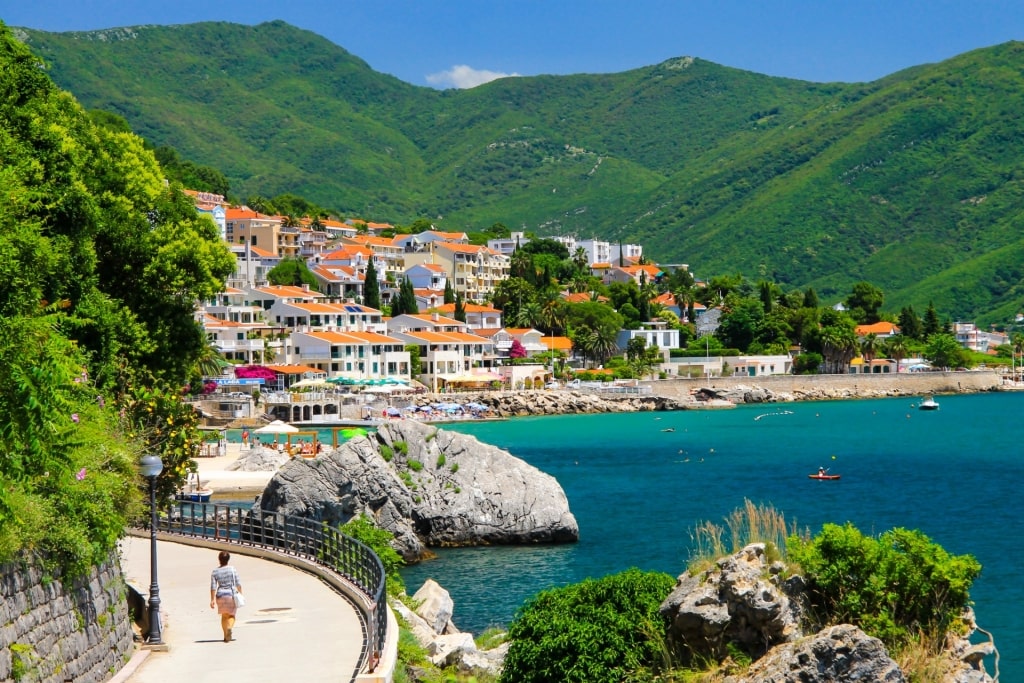
Herceg Novi
To the western entrance of the Bay of Kotor, a stone’s throw from the Croatian border, Herceg Novi is a gorgeous coastal town that slopes towards the sea at the foot of Mt. Orjen.
Explore Herceg Novi’s treasure trove of churches, squares, castles, and forts, with the town’s stone buildings creating a sea of bright terracotta rooftops interspersed by pretty mimosa trees.
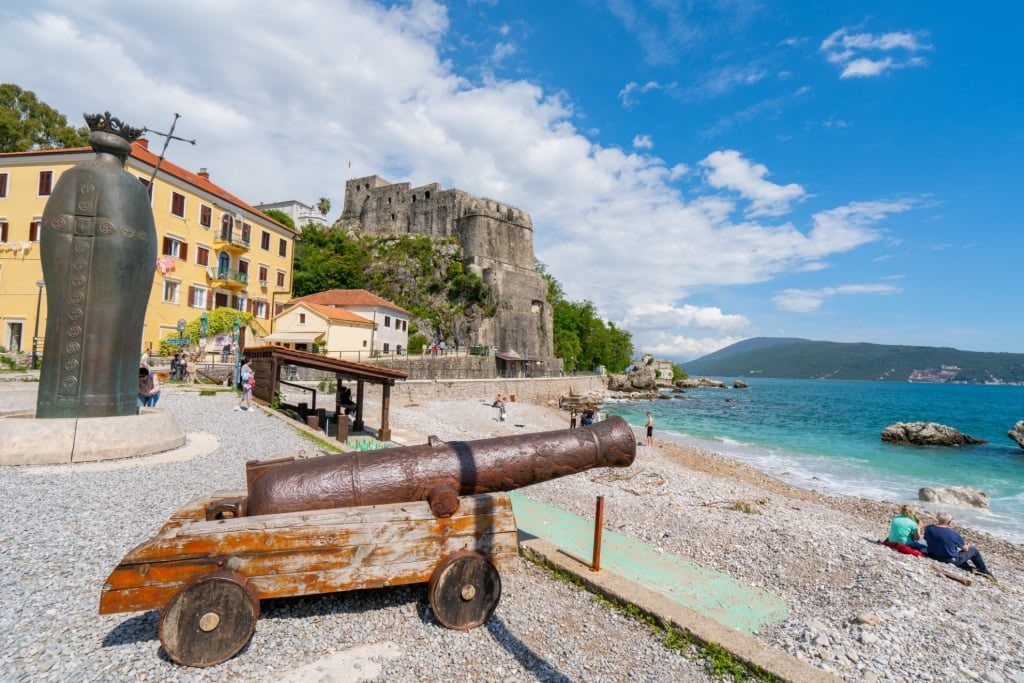
Forte Mare Fortress, Herceg Novi
Herceg Novi Old Town is known for its many steps that lead from Belavista Square to St. Joakim Church, with shops, cafes, and restaurants filling the narrow streets. At the southern end of the Old Town is the medieval Forte Mare Fortress, which looms over the town’s handsome beach.
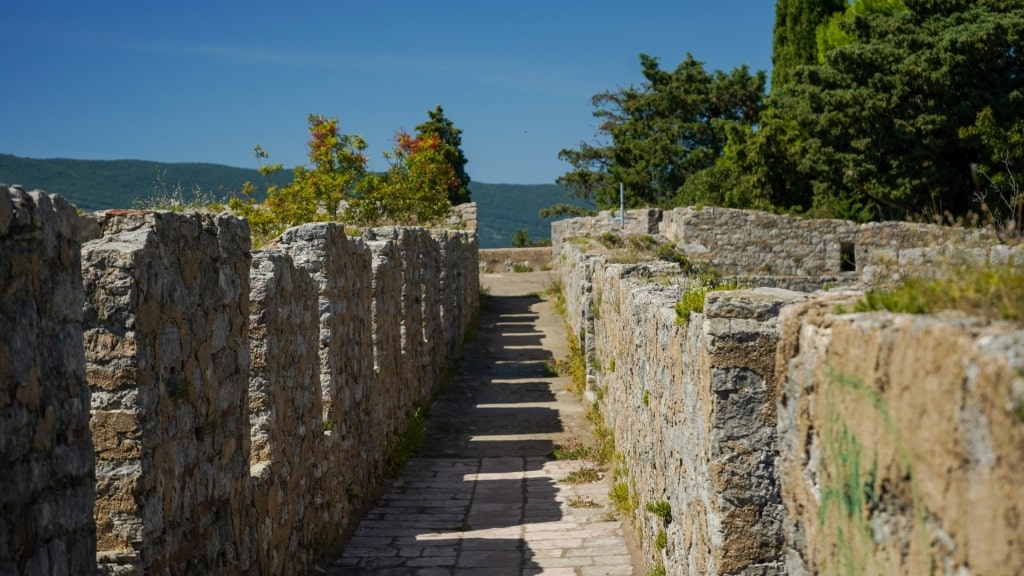
Spanish Fortress, Herceg Novi
You can swim, sunbathe, and kayak on the beach or dip into more history at the city’s 17th-century Spanish Fortress and the 15th-century Kanli Kula. Presiding over the northern edge of the Old Town, Kanli Kula is an Ottoman tower with a well-preserved amphitheater hosting a program of summer concerts.
After a day of exploration, visit Herceg Novi’s Savina vineyard at Savina Monastery, where you can sip on elegant wines from the town’s sea-facing vineyard.
Kotor Old Town
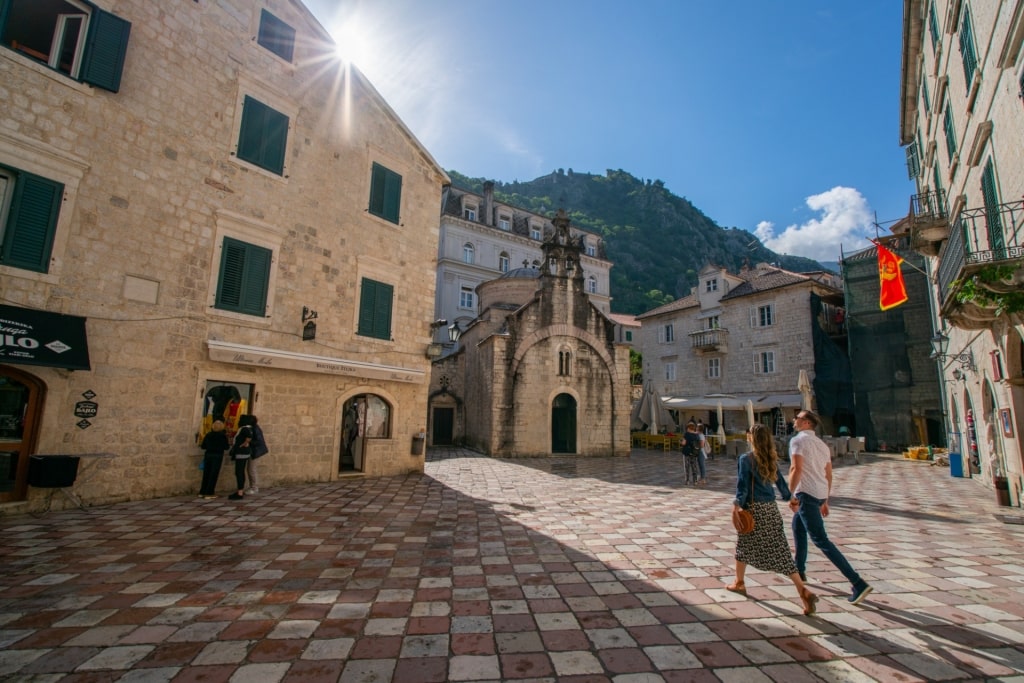
Kotor Old Town
Kotor Old Town is as ravishing as guidebooks and postcards would have you believe.
Tucked into the innermost eastern point of the Bay of Kotor, it’s arguably the best place to visit in Montenegro, with museums, cathedrals, churches, and palaces enveloped within its medieval walls.
Trace the four walls, linked together by the Gurdić Bastion, the River Gate, the Sea Gate, and Kampana Tower, the striking bastion that overlooks the emerald water of the Škurda River.
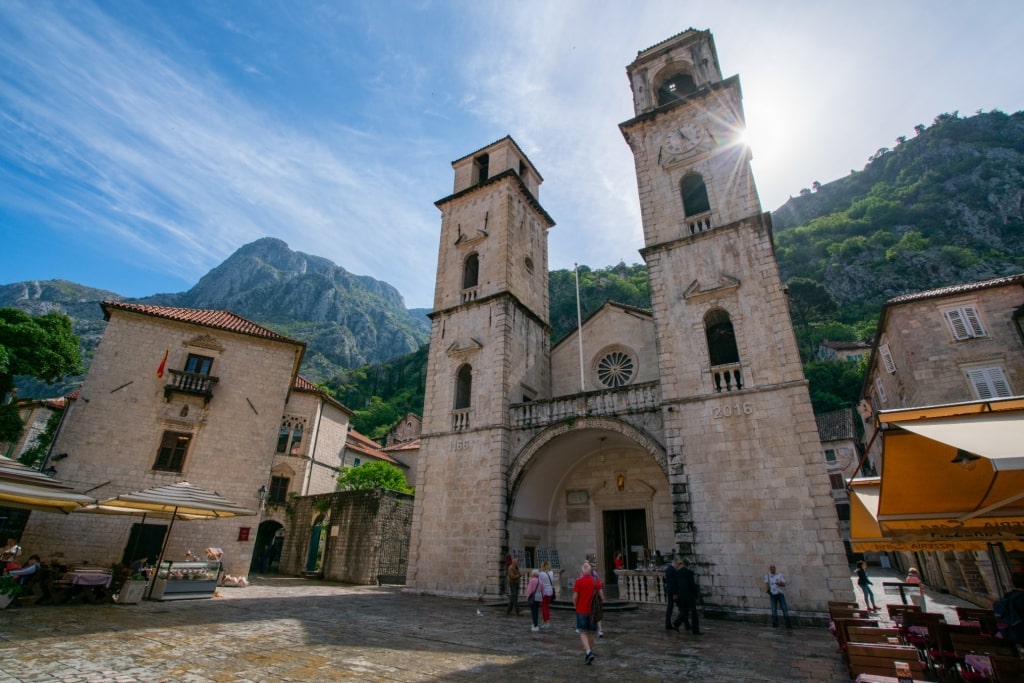
St. Tryphon’s Cathedral in Kotor Old Town
One of the best things to do in Kotor is to visit the Old Town’s 12th-century St. Tryphon’s Cathedral, with its twin four-story bell towers and jaw-dropping frescoes inside. After, soak up more of Kotor’s old-world charm at one of the café bars, with tables spilling into cobbled alleyways and charming squares.
If you’re more of an active traveler, consider viewing Kotor Old Town from above by making your way up the zigzagging Ladder of Kotor. The route is not for the faint-hearted—and best conquered earlier in the day—consisting of around 1,350 steps to reach the 4,000-foot Kotor Fortress.
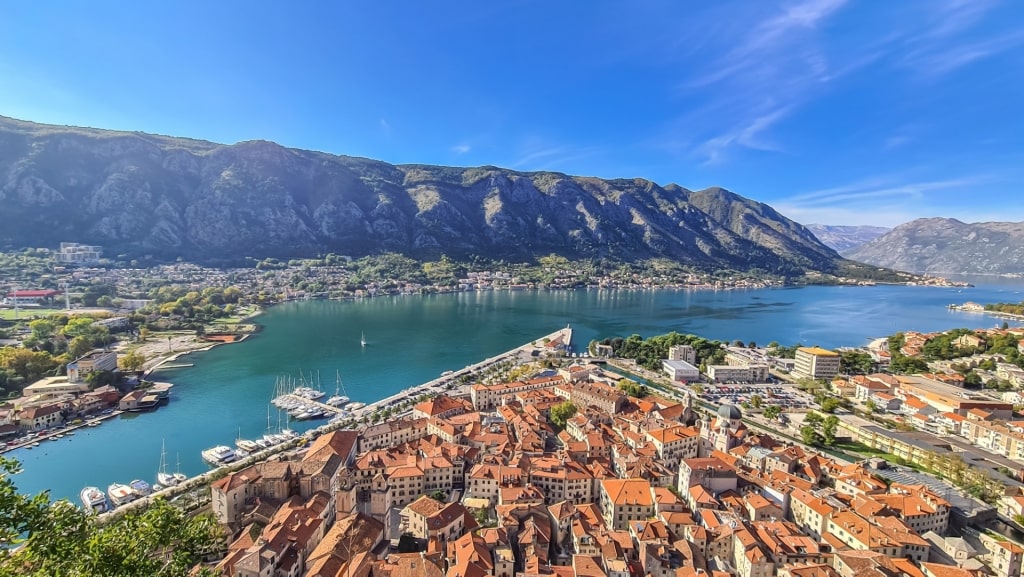
View from Kotor Fortress
The vistas from the top are as dramatic as the hike, stretching across the still bay and surrounding mountains.
Bar Aqueduct
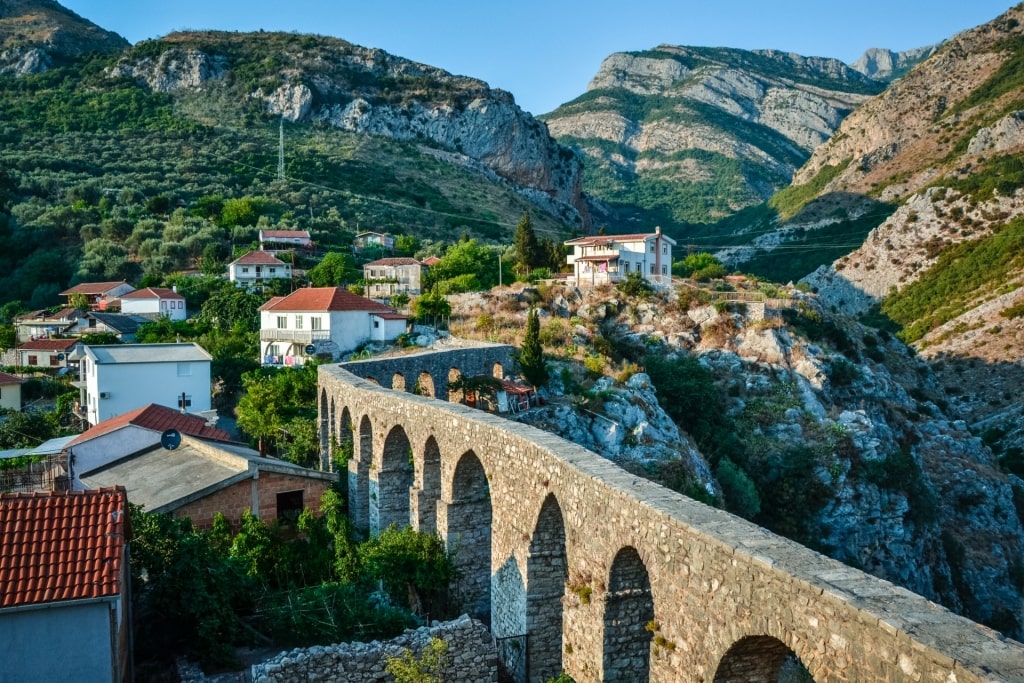
Bar Aqueduct
This architectural gem, one of the best places to visit in Montenegro, lies just outside Stari Bar.
Bar Aqueduct stretches 2.5 miles, cutting through the valley on the northern edge of Stari Bar Fortress. It’s the only aqueduct in Montenegro and the largest and best-preserved in the Balkans.
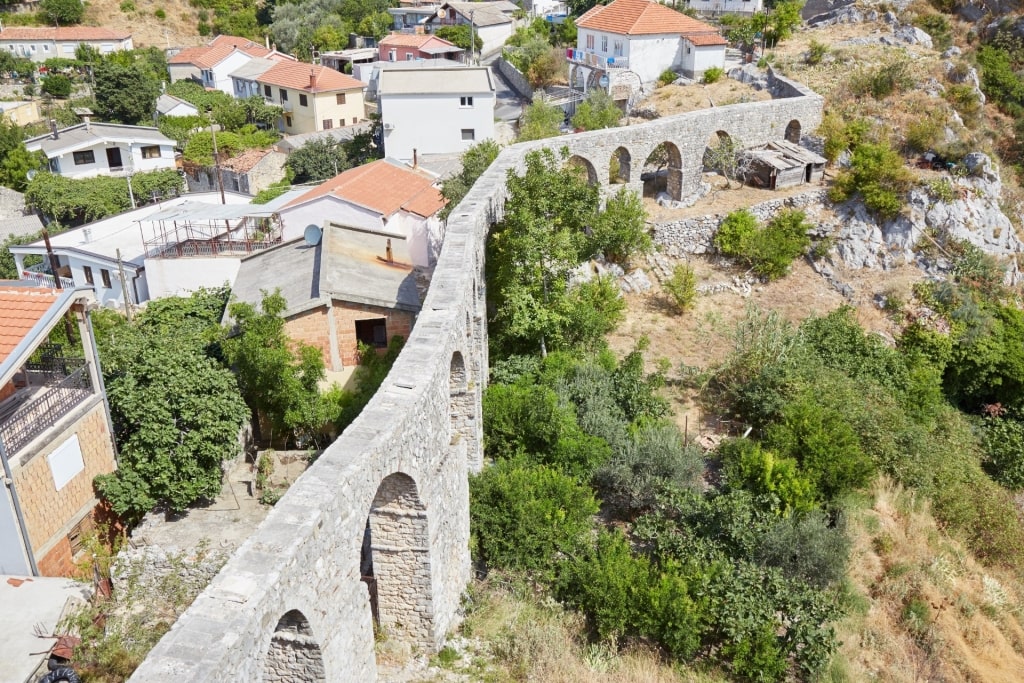
Bar Aqueduct
The original aqueduct was built in the 16th century to carry water from a spring on Mt. Rumija to the Old Town.
The aqueduct was destroyed during a devastating earthquake in 1979 and has since been rebuilt so visitors can again marvel at its 17 stone arches.
Bay of Kotor
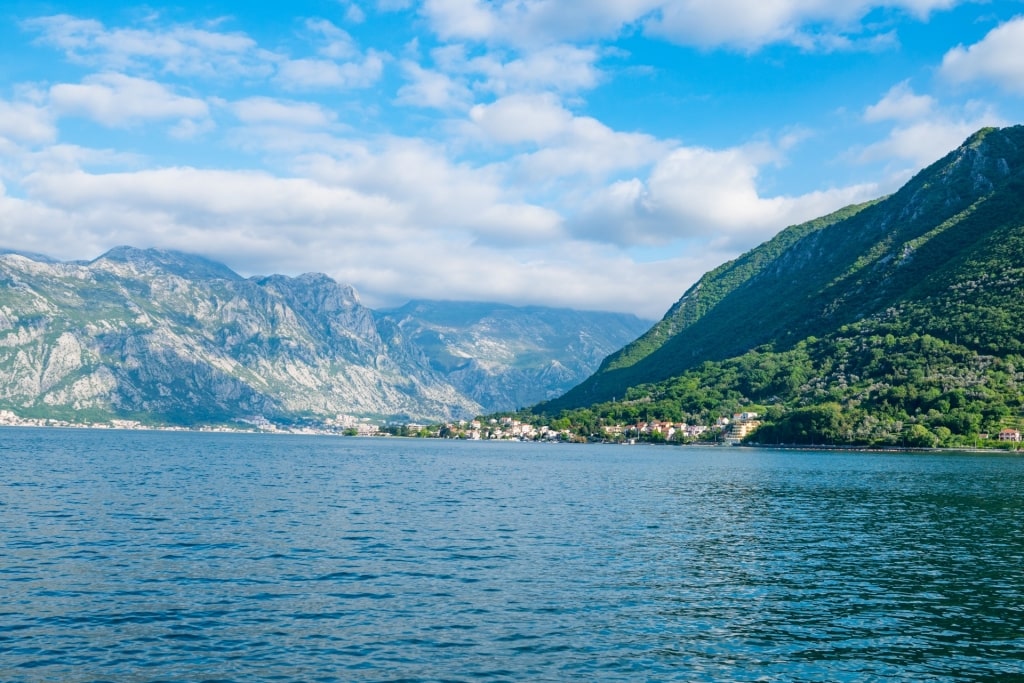
Bay of Kotor
The unfathomably beautiful Bay of Kotor, also known as Boka, is among the best places to visit in Montenegro, stretching 17 miles inland in the form of a long, winding fjord.
Some of the Eastern Mediterranean’s most captivating towns line the Bay of Kotor, including Tivat, Herceg Novi, Risan, Perast, and Kotor itself. There are forts, churches, beaches, and small fishing villages.
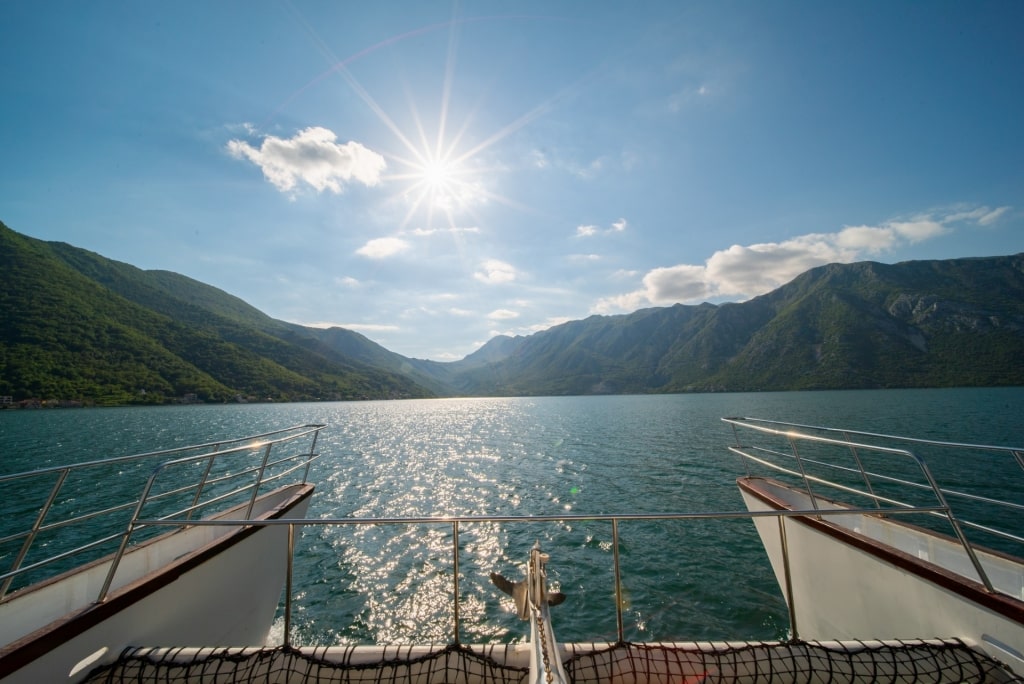
Bay of Kotor
You could join a high-speed boat ride, a more leisurely ferry crossing from Herceg Novi to Tivat, or vice versa, or for the ultimate European adventure, kayak in the inky waters. If you prefer to stay on dry land, biking and hiking are always popular around the bay.
One of the best things to do is take a water taxi from Kotor to the seafront village of Prčanj, where there’s an old church and a cluster of restaurants on the waterfront. Stop for a long lunch at Konoba Boka Bay, where dishes include octopus salad, homemade fish pate, and squid ink risotto, complemented by a carafe of zesty local wine.
Budva
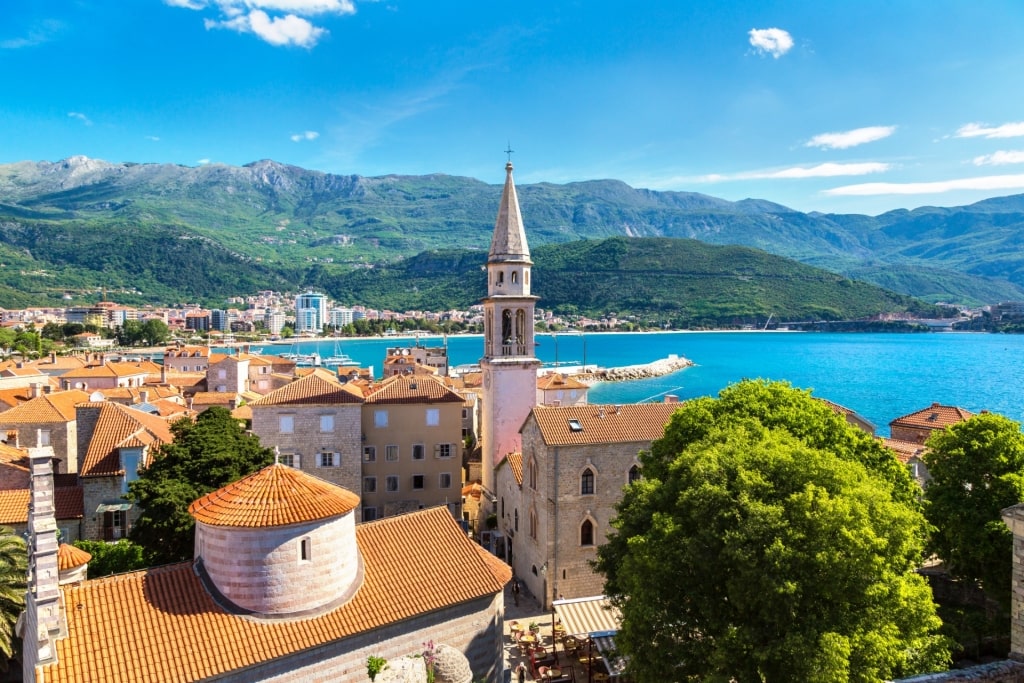
Budva
Glamorous Budva is anchored on a sheltered stretch of the Adriatic coastline, with sweeping beaches, a storied old town, and fantastic restaurants.
Wander along the yacht-lined Budva Riviera. Here you can take a water taxi to explore Sveti Nikola, an island in the middle of the bay. There are scuba diving tours, jet skis, and kayaks to rent.
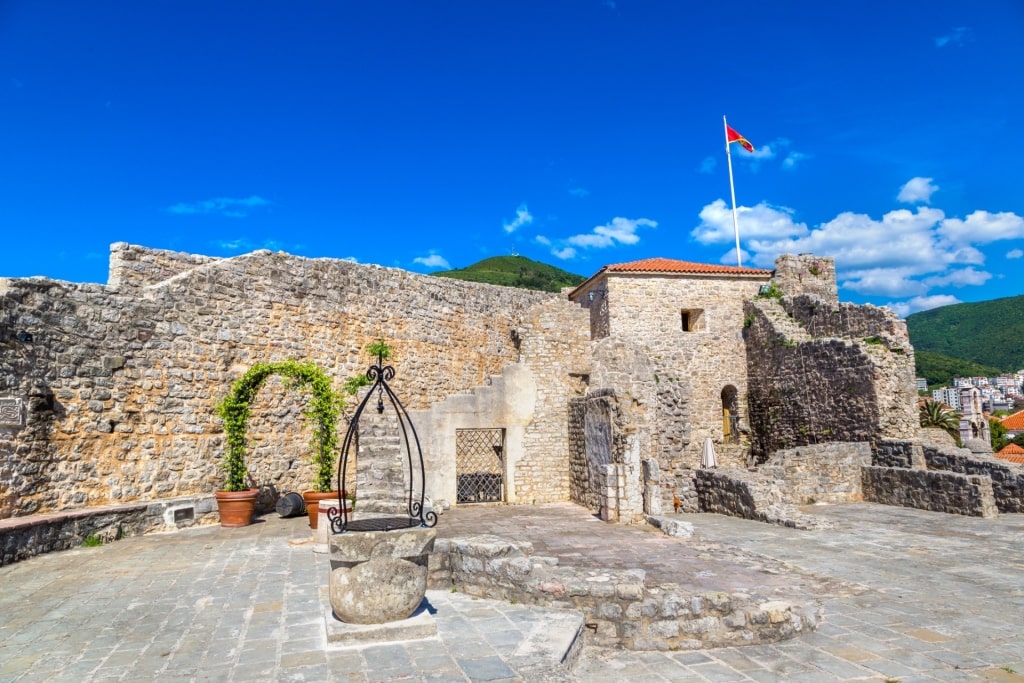
Budva Citadel
Culture-thirsty travelers relish roaming the Venetian-period Budva Citadel, with its marble-clad streets and 15th-century Church of St. John that towers above Old Town. Browse more stone churches and chic boutiques, and delve into the Budva Museum for its fascinating artifacts excavated from the area’s ancient necropolises.
If you’re in the mood for sunbathing, go to Mogren Beach, west of Budva Citadel. It’s one of the best beaches in Montenegro for its golden sand.
Stari Bar, near Bar
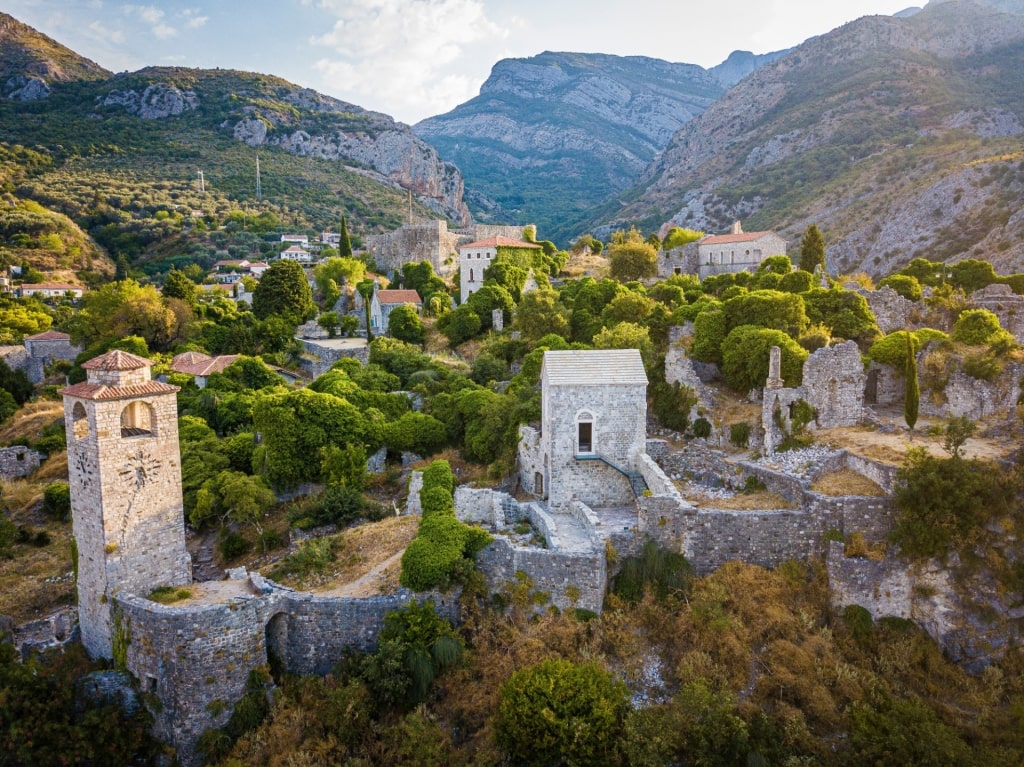
Stari Bar, near Bar
Stari Bar is a fortified hilltop old town, packed with relics and ruins, dotted with green cypress trees, and surrounded by olive groves and mountains.
It’s considered one of the most important medieval archaeological sites in the entire Balkans because of its walls, towers, ramparts, squares, churches, and citadel, with Late Gothic, Renaissance, and Baroque styles on display.
Visit the small museum near Stari Bar’s entrance to understand the epochs of the old town, which can be traced back to the Roman period.
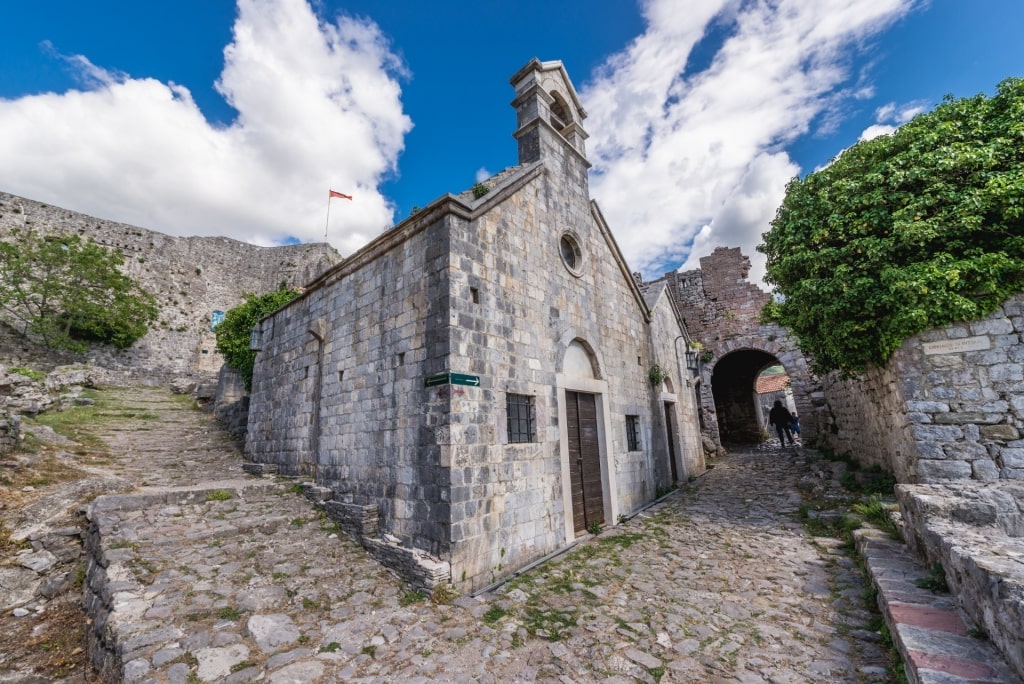
St. Nicholas’ Franciscan Monastery, Stari Bar
Green arrows direct visitors around the site, identifying various remnants of the past, including the 13th-century St. Nicholas’ Franciscan Monastery that was transformed into a mosque during the Ottoman Empire.
St. John’s Church has been rebuilt and there’s an Ottoman-era bathhouse and a tall clock tower on a grassy hill.
Once you’ve explored the UNESCO-listed buildings, browse the souvenir shops and stop for a coffee or lunch at one of the many cafes and restaurants in the center of Stari Bar.
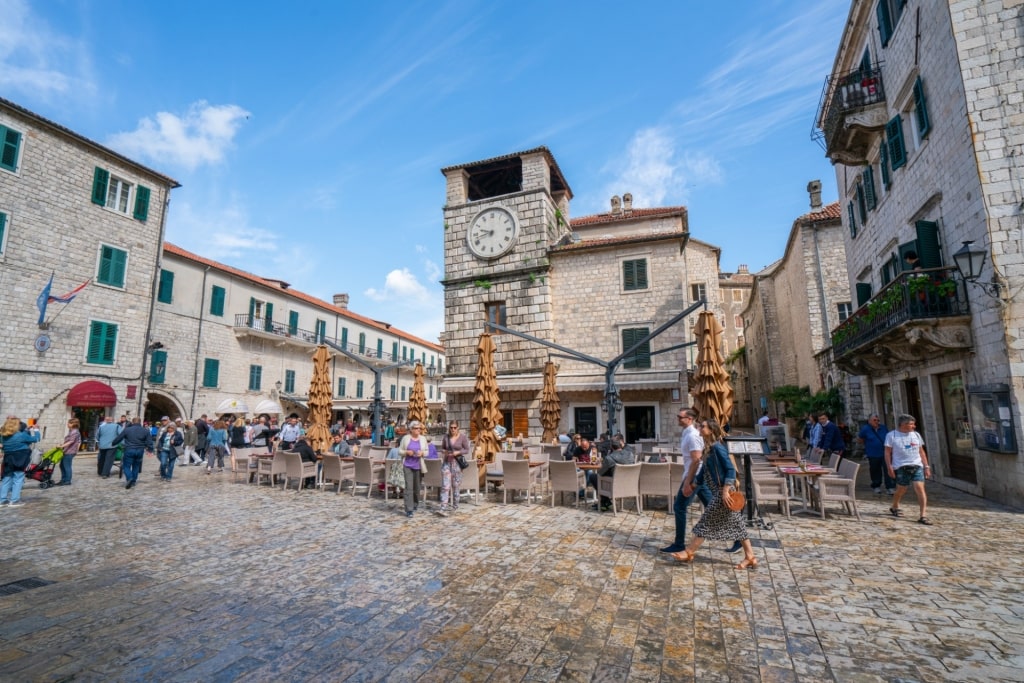
Kotor Old Town
Do you want to discover Montenegro’s extraordinary beauty and history? Browse our cruises to Montenegro and book your dream getaway.


